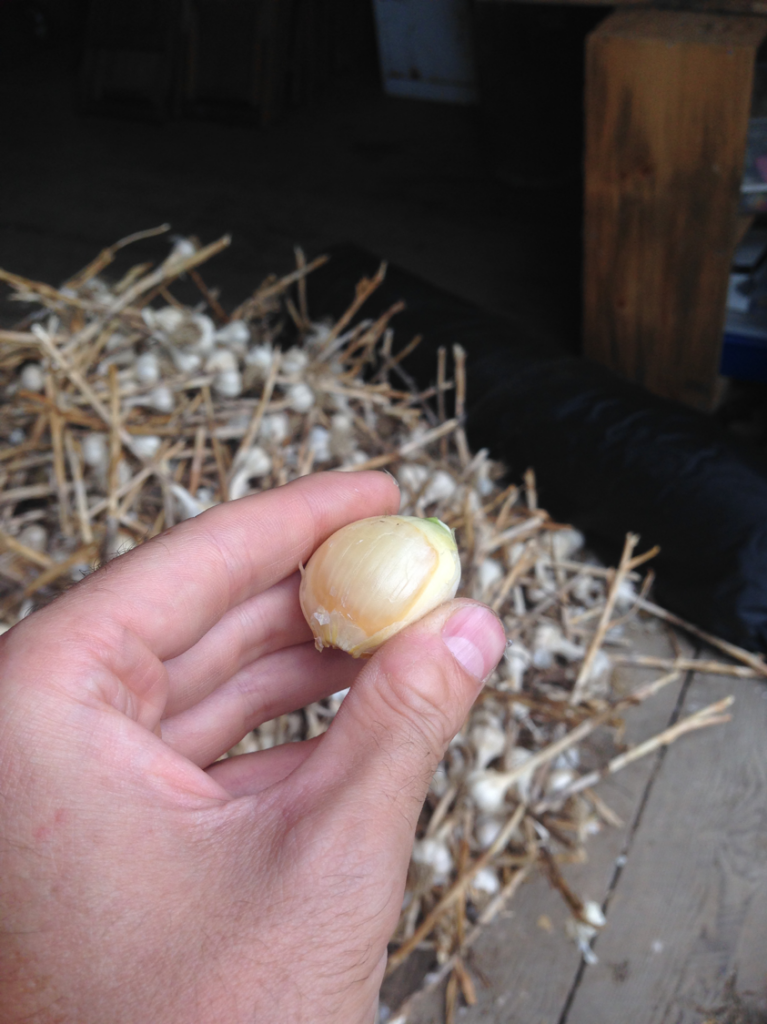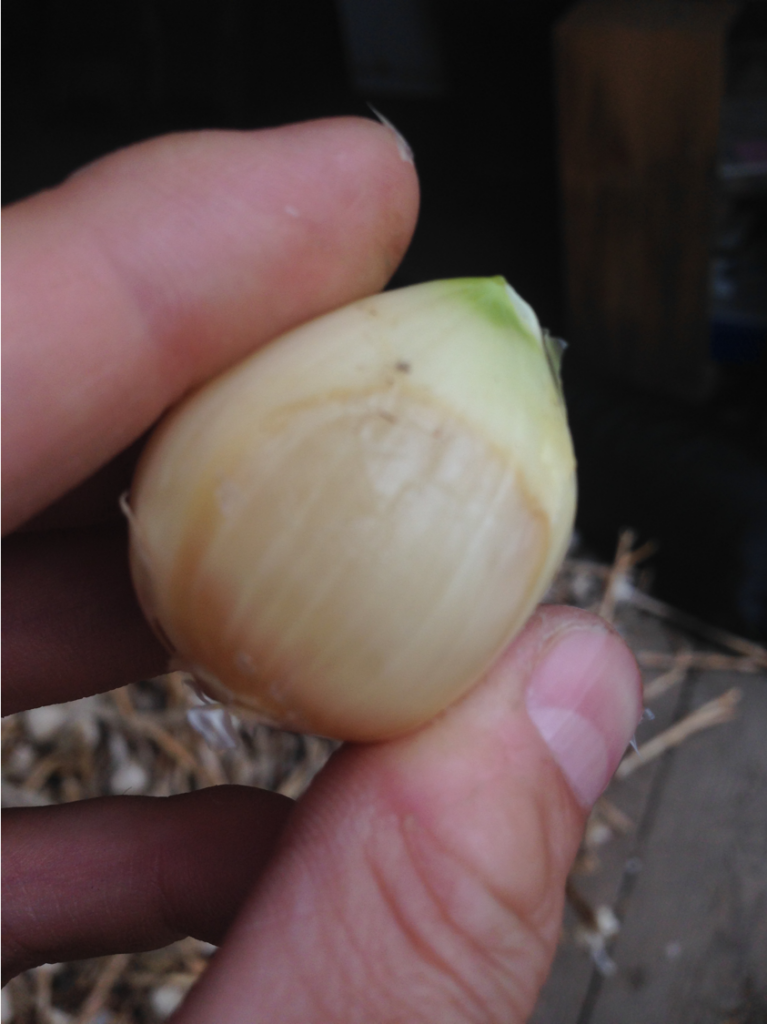
Condition: Waxy Breakdown (an abiotic disorder)
Pest/disease identification and lifecycle, most common damage symptoms and crops affected:

Waxy breakdown of garlic is a physiological condition that sometimes affects garlic, though typically only rarely in Maine. Development of the condition is not fully understood but often associated with very high temperatures and/or sunscald damage around harvest time, or during curing. Low oxygen and poor ventilation during curing and storage may also contribute to the condition. Excessive respiration rates after harvest may be involved in the development of the condition.
Symptoms begin as light yellowish discoloration in the flesh of the clove, often taking on a “water soaked” appearance that may be slightly more transparent than the surrounding healthy tissue. As the condition progresses the entire clove turns a deep yellow color, and exhibits the waxy, soft texture that gives the condition its name. Eventually cloves may turn an amber brown color and become noticeably reduced in size.
Waxy breakdown affects cloves on an individual basis — though many or all cloves in the same bulb may be impacted. Because it only affects the flesh of the clove and not the protective layers around it, waxy breakdown may not be easily spotted until skins are removed from cloves, or the condition progresses enough that cloves begin to shrivel, leaving void space underneath the bulb’s surrounding wrapper layers.
Management options:
Because this condition may be affected by excessive respiration rates the primary management approach is to follow best practices for rapid curing and drying of plants that are already headed towards dormancy, while minimizing risks of excessive heat and sun damage.

- Stop irrigating garlic well before harvest, and attempt to harvest in dry conditions when possible.
- Aim to provide the best ventilation possible in your curing environment.
- Avoid temperatures above 90 F.
- Provide some shading from direct sunlight.
Hoophouses can be great for curing garlic, if a shade cloth is used and sides and ends are open as often as possible. In a hoophouse, make sure to keep garlic elevated, particularly if black ground cloth is in place, as that may get very hot on sunny days. Barns/sheds can also work well provided that very good airflow is provided. In both scenarios, keeping garlic elevated allows for better airflow and ventilation.
Author
Written by Caleb Goossen
Sources
Cornell College of Agriculture and Life Sciences. 2022. “Waxy breakdown on garlic.” Accessed August 25, 2022. https://blogs.cornell.edu/livegpath/gallery/garlic/waxy-breakdown-on-garlic/
Oregon State University Extension Service. 2022. “Waxy breakdown of garlic. February 7, 2022. https://bpp.oregonstate.edu/sites/agscid7/files/bpp/attachments/waxy-breakdown-of-garlic-feb-7-mlp.pdf
